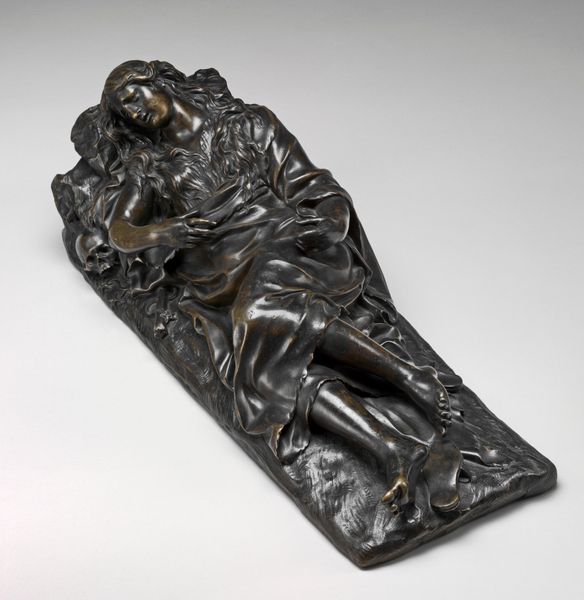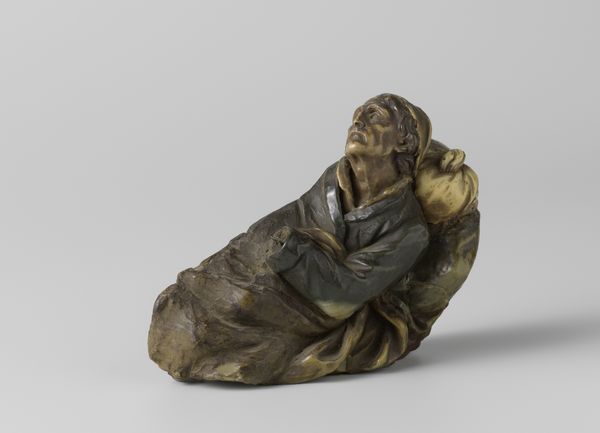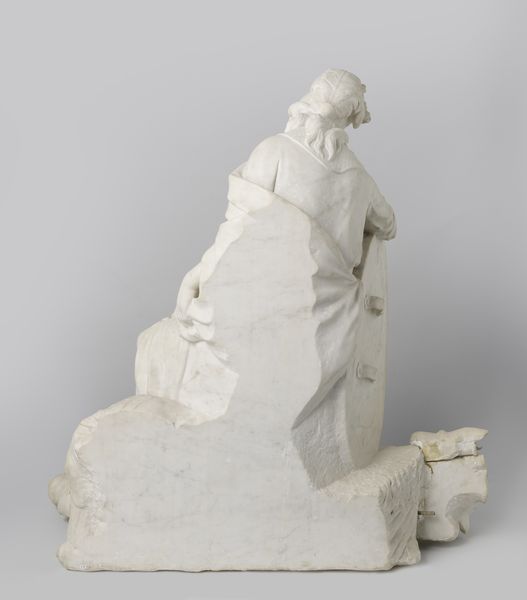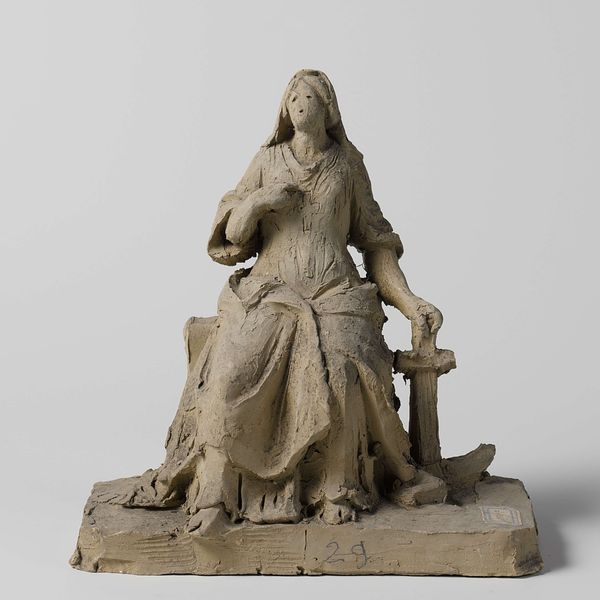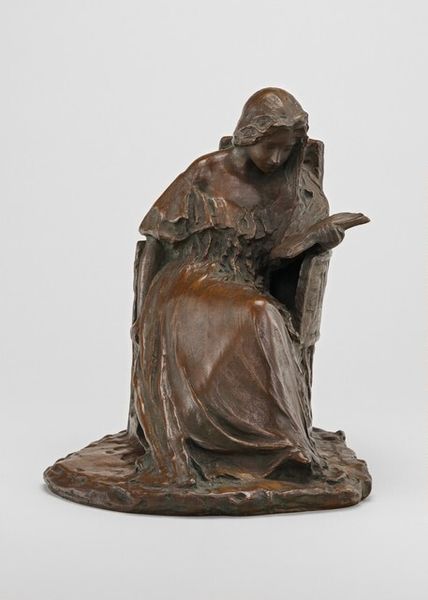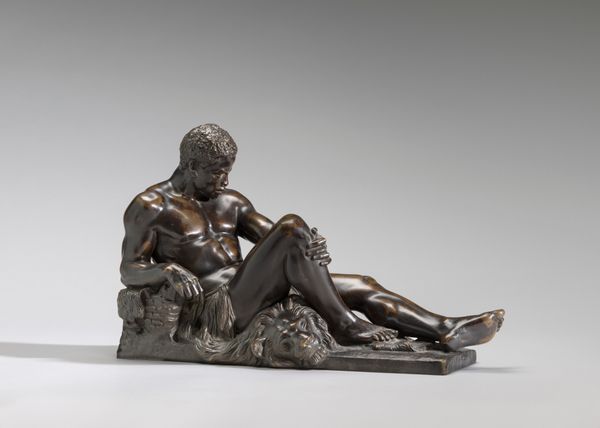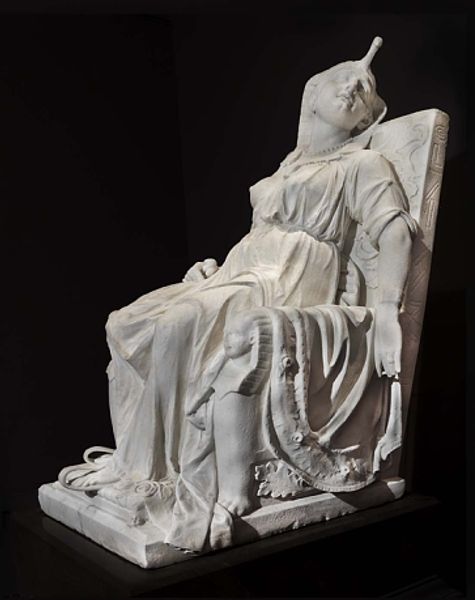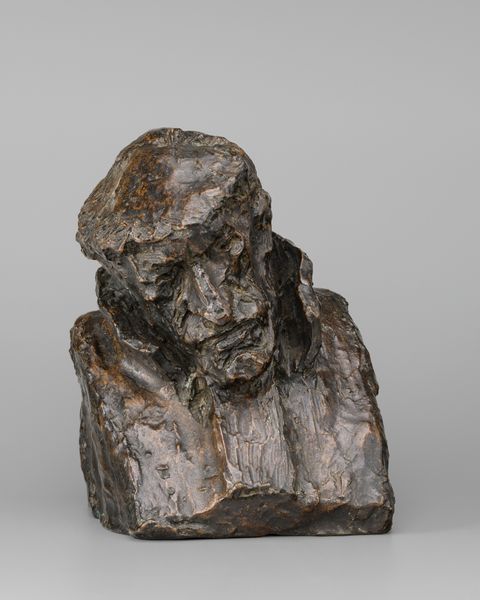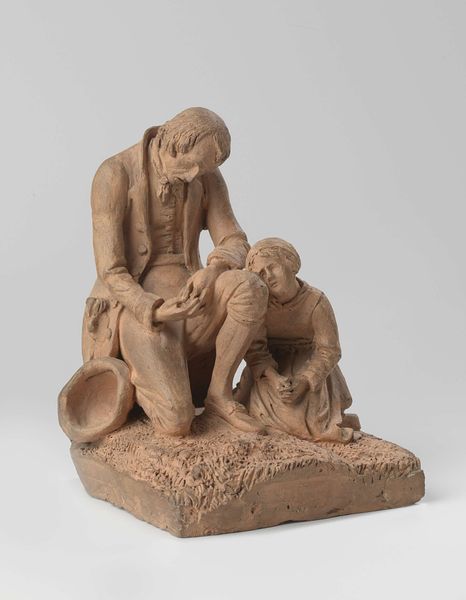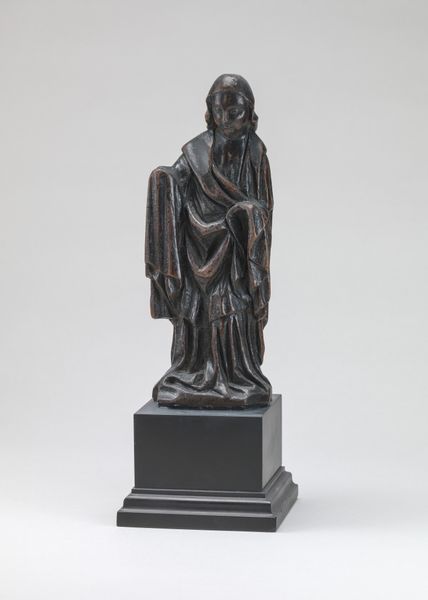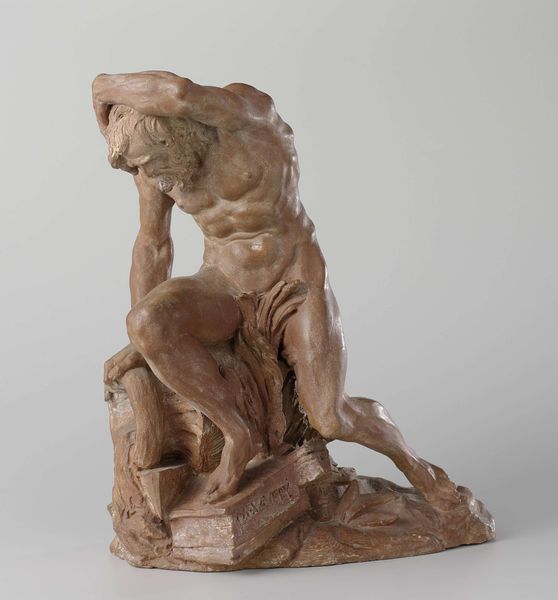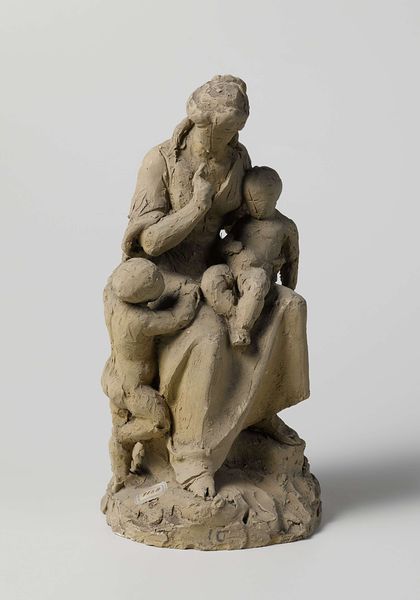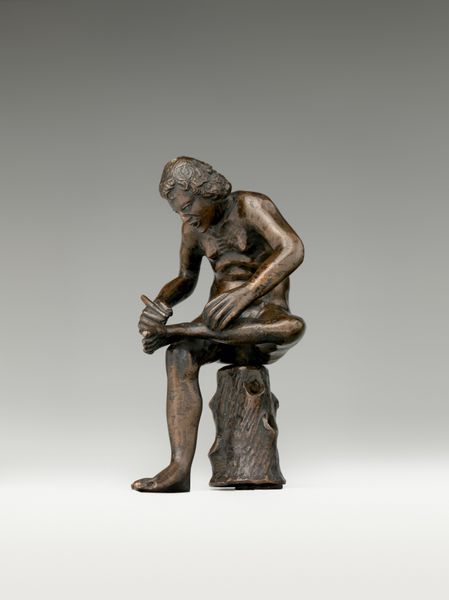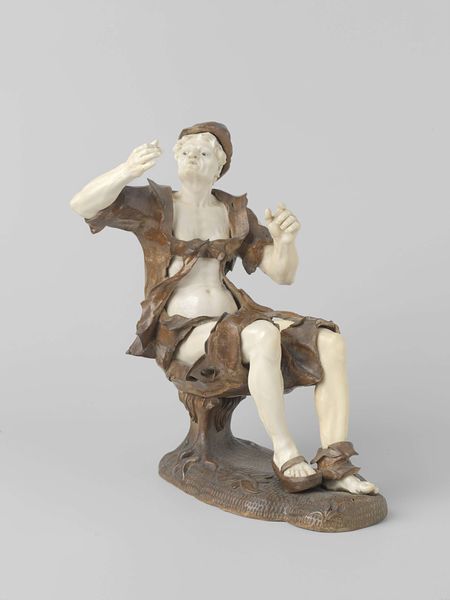
sculpture, wood
#
portrait
#
sculpture
#
figuration
#
sculpture
#
romanticism
#
wood
#
genre-painting
#
academic-art
#
statue
Dimensions: height 16 cm, width 11.5 cm, depth 23.5 cm
Copyright: Rijks Museum: Open Domain
Curator: This piece before us, titled "Peinzende man in een leunstoel," which roughly translates to "Pensive Man in an Armchair," is attributed to Louis Royer, and was likely created sometime between 1803 and 1868. Editor: He looks so burdened by thought. The wooden medium has this unfinished quality, almost as if the figure is emerging from the very material of the chair itself. Curator: That unfinished aspect certainly speaks to the labor involved. Consider the direct carving into the wood – the artist's hand is so present. I'm struck by how the visible tool marks actually contribute to the emotional impact. It challenges any clean division between art and craft. Editor: And, consider this piece within its historical context. The Romantic era placed a huge emphasis on individuality, internal feeling. A museum displayed pieces to influence cultural ideals by exhibiting those inner dramas for the consumption and elevation of audiences. Curator: Yes, Romanticism certainly privileges feeling, but what’s equally intriguing is how Royer manages the drapery. See how the robe clings in some areas, concealing and revealing the body beneath. It focuses attention on its textile qualities. Editor: How was this received at the time? Was it initially intended as a public artwork or as a more private commission? What narratives did it evoke when displayed, how accessible was it to the population? These all had strong bearing on cultural memory. Curator: Those are very insightful questions! I wonder about the original function too, but also about the cultural context of acquiring something like this, this specific type of artwork in a space like this in present day. It seems as if the piece is drawing lines through art, politics, labor, even emotion and display through time. Editor: Exactly, and I think in a modern museum setting we're continually negotiating the ways in which these artifacts perform these functions and evoke historical periods. Food for thought, indeed. Curator: It's a captivating piece to view with all that context. Thanks! Editor: You as well, this has certainly altered the lens with which I will be perceiving this moving forward.
Comments
No comments
Be the first to comment and join the conversation on the ultimate creative platform.
